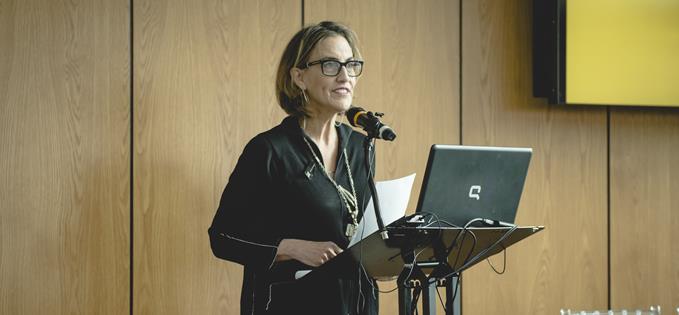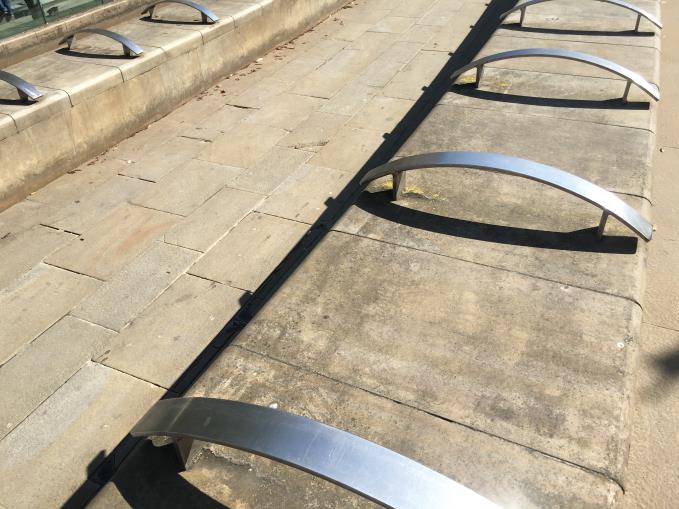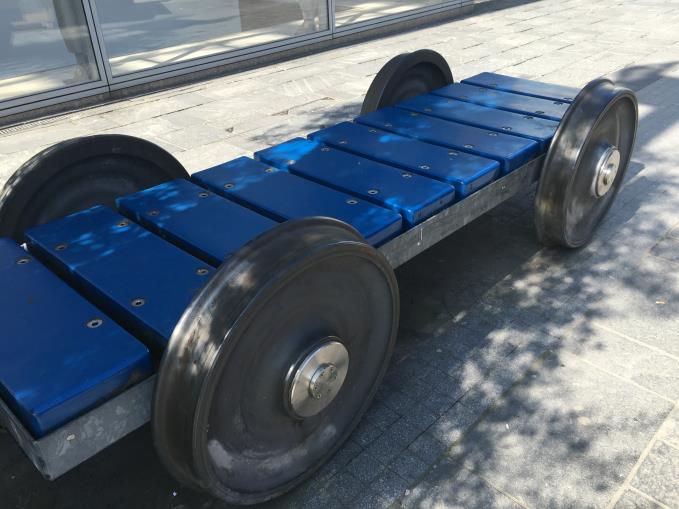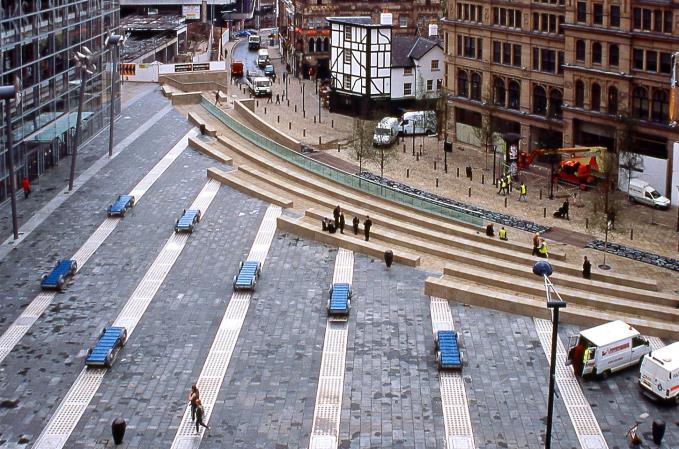INTERNATIONALLY renowned cityscape designer Martha Schwartz, whose Exchange Square was a key part of Manchester's post-bomb reconstruction, has delivered a scathing attack on the city's treatment of her work in the years that have followed.
This regimentation was done without even the courtesy of calling me
"Why pour all that money into a project they can't look after?" she asked. "Why employ an artist and then f**k it up?"
Schwartz, tenured Professor in Practice of Landscape Architecture at the Harvard University Graduate School of Design, was a keynote speaker at the Landscapes of Identity Symposium staged at the National Football Museum within the landmark Urbis building. The gathering was a trailblazer event for the Manchester Histories Festival which unfolds in the city over a ten day series of celebratory events from June 3 to 12.
 Martha Schwartz at the Landscapes of Identity symposium
Martha Schwartz at the Landscapes of Identity symposium Exchange Square, 2016
Exchange Square, 2016She began by claiming the "first mis-step by the city" was that her company won the project as a result of a competition.
"Competitions are not the way a city and its people...are best served. Competitions are always an indicator of top-down endeavour and not inclusive. You have people far away and unknowledgeable designing spaces with almost no information about what is happening on the ground politically, socially, economically or culturally."
Exchange Square was laid out in the wake of the destruction wrought by the 1996 IRA bomb attack in the space created by the demolition of Longridge House, the replacement of the wrecked Marks & Spencer store and the opening up of New Cathedral Street. At the time her design was hailed as an example of how an effective public realm design could galvanise the full recovery of a devastated urban area.
But Schwartz told the symposium: "The first assault was on skateboarders and boys.... a heavy-handed and intrusive army of steel fixtures was attached to the stone benches to protect the public [from them]. This regimentation forced people to sit in a more formalised structure as if in a movie theatre. This was done without even the courtesy of calling me."
 Skateboard spoilers
Skateboard spoilers  Railway bogies as street furniture
Railway bogies as street furniture She disclaimed the "child-like and clunky pinwheel sculptures" in the square that she had nothing to do with and said "the largest and most profound degradation was the permanent insertion of a Ferris wheel, clumsily installed and which dwarfed this tiny space. This was a severe and aggressive defacement...demoting it from a civic square of dignity and grace into a carnival ground where anything goes. And anything did go. The degradations continued with the addition of hideous sculptural pieces that were actually 3D signage for restaurants and shops."
Schwartz accused the city of not valuing her firm's contribution. "Someone must have told them they should hire good designers but they really didn't understand why."
She claimed: "Folks, unless you have people in power who have other values than simply making money and understand by supporting all the people who make up a community - including the poor - in the regeneration process, money will always be the driver behind development and regeneration."
She said she was glad that the "junk that had defaced and devalued the space" had been removed but claimed it wasn't to preserve an important place of identity for the citizens "but for people paying for the expensive rooms in the new hotel who will not wish to tolerate the carnival outside...
"I believe Exchange Square has not been allowed to reach its fullest potential. Let's see what happens in the next twenty years."
Ray King is a journalist, writer and commentator. His book Detonation - Rebirth of a City, is now available to download on Kindle (£2.77) or purchase on Amazon.
 Exchange Square during construction in 1999 with the 'clunky pinwheels' to the left (credit: marthaschwartz.com)
Exchange Square during construction in 1999 with the 'clunky pinwheels' to the left (credit: marthaschwartz.com)








 Another failing water feature in Manchester
Another failing water feature in Manchester





